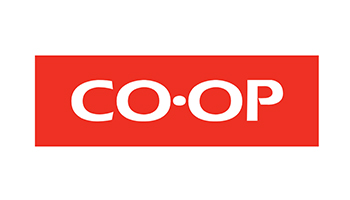Top reconciliation terms & definitions: beginners’ guide
In a world of infinitely deepening specialization, terminology develops in pace with evolution of technologies and inevitably requires special attention. One needs to familiarize himself with the modern industry slang first, in order to get a meaningful insight into the professional field about to be examined. The finance & accounting business, where account reconciliation belongs, is no exception. New vocabulary is introduced continually to reflect process innovations that come to life. Professionals certainly need to keep up to speed with the most recent developments, but the first step is catching up on the terminology.
Here are the most frequently used phrases in the blooming reconciliation software space. You will notice it’s common to come across familiar words in unusual combinations. Often terminology is tied to the software platform employed by a respective company and varies from system to system, although the processes referred to are essentially identical for all companies. At ReconArt we know that words convey ideas, and ideas spark innovations, so let’s develop a baseline for key terminology and basic understanding:
Transaction matching
Comparing transactions from different data sources and bundling them together based on predefined criteria. The primary objective is to identify transaction discrepancy or to discard the possibility thereof. Ticking them out as related to each other means that the internal record and the counterpart record of the same logical event are in agreement. That is often done manually or in a spreadsheet framework which is time-consuming and likely to produce errors. ReconArt™ features a state-of-the-art matching engine with wide ranging capabilities to automate fast, reliable, rule-based sorting out of millions of transactions. Potential inconsistencies are classified accordingly allowing users to focus on their further investigation and resolution.
Outstanding items
These are unauthorized or erroneous transactions or unsettled items which have not found their rightful match yet. Identified excessive variance between two matched items could also be the case. These types of situations are important. Records that failed to be matched based on the listed rules could possibly expose fraudulent or neglectful activities. It might also indicate a benign occurrence such as a delay in the booking of the payment for a certain open invoice. Keeping a good inventory of outstanding items, their origins, their expiration period, their urgency, as well as their destination once a resolution has been found – it is an essential part of the robust reconciliation process.
Exceptions management
A set of measures to organize the handling of outstanding transactions (exceptions) based on their origin or impact. Reconciliation tools, and ReconArt™ in particular, enable items to be addressed as single exceptions or managed as groups of similar type of transactions. The resolution of exceptions must be accompanied by a granular audit trail in order to justify its legitimacy following a diligent investigation.
Transaction aging
Understanding how transactions flow and settle over time is important. Transaction age and status are key components in this understanding. Modern reconciliation solutions should provide a capability that allows calculation of the transaction age depending on a configurable formula and set determinants – origination date, resolution date, current date, or the period end date. An outstanding transaction which dates back past accounting periods should be red-flagged, in order to be monitored and properly investigated prior to resolution.

Break in trades reconciliation
Breaks are exceptions or outstanding items resulting from comparison between broker data and internal accounting data. Such discrepancies are encountered in position reconciliation, too, where the comparable balances originate from more than two independent sources.
Account certification
The certification of accounts is a Balance Sheet or Financial Close related process. It comprises a set of procedures executed by users with designated certification roles. At the final tally, the line items of two balances pertaining to the same reporting period have to be compared and agree with each other to be duly substantiated. With ReconArt™, adherence to certification policy is guaranteed with documentation of applicable outstanding items, explanatory notes, and any supporting documentation attached.
Reconciliation workflow
One of the great features of reconciliation tools is their ability to facilitate team collaboration. Configurable workflows arrange user tasks in line with predefined principles, schedule, access levels, approval hierarchy and target outcomes. For instance, the certification procedures checklist within the ReconArt™ is automatically distributed among the authorized users, thus prompting them to take action in compliance with financial regulations. Period-end close campaigns also run on a sequence of recurring action items. ReconArt™ provides templates for their completion in a timely manner and with strict separation of duties.
Audit trail
ReconArt™ maintains a fully transparent record of activities allowing transaction detail drill down with exquisite granularity. Manual and tech-challenged approaches to reconciliation do not provide the level of transparency and detail needed to maintain a proper audit trail. With ReconArt™ every single operation from source to resolution, every user involved, every related accounting record are duly mapped, well visible and accounted for. This transparent set-up is particularly convenient in times of audits, when solid evidence for process consistency and detail must be produced swiftly.
Account variance analysis
Variance analysis concentrates on the differences between expected and actual values. Counterintuitively, apart from the ideal zero variance, reconciliation software systems can be calibrated to accept greater variance tolerances, without arbitrariness or contradiction to sound business logic. Moreover, the quantitative analysis can encompass consecutive periods, establish patterns, and enclose supporting documentation. Follow-up can be thus automated.
ETL functionalities in reconciliation
ETL stands for Extract, Transform & Load and involves on-boarding source data. In the ETL process data can be extracted from numerous databases and applications, transformed into the appropriate form and then loaded/sent it to another system to support a business process. The functionality is widely applicable in reconciliation systems and is part of ReconArt’s™ DNA. Of particular benefit, recurring processes can be automated. Tasks can be scheduled in the right sequence via an intuitive scheduler. This process can be configured to create journal entries that can be transferred automatically to the General Ledger following approval flow. ETL also plays an integral role in analytics.
ERP or GL-agnostic account reconciliation software
A generalized software which is in position to exchange information with different systems and can seamlessly integrate with other platforms, including third party ERP and GL software and subsidiary systems. The ERP/GL agnostic system is flexible enough to function in a variety of environments. Regarding data reconciliation, this property translates into added value for both the ERP vendor and its adopters. ReconArt™ is designed with technological synergy in mind, all geared towards advancing client success.
Certainly, the terminology list above is by no means exhaustive. In upcoming publications we will continue discussion on the subject, revealing other aspects of reconciliation and the groundbreaking process improvements introduced by ReconArt™. Stay tuned for:
- what data reconciliation is in its essence,
- which types of reconciliation you should be aware of, and
- what application our solution has in different business domains.

 follow our blog
follow our blog






















 Quick response
Quick response

